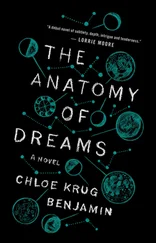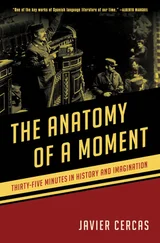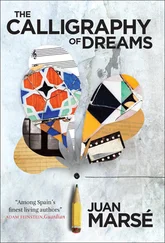“It all does seem to happen a bit fast,” said Gabe.
Rosemarie’s wrists were knobby and her ankles soft and tubular, encased in nude pantyhose that stuck out from beneath her pants. But her hand on the boy’s head was firm.
“I’m afraid so,” said Keller.
“He’s in good hands,” I said.
“Sylvia will see you down the hall,” said Keller.
Rosemarie squatted down to take the boy in her arms. Her knees landed on the linoleum floor with the tired grace of aging animals, the brittle memory of old bone.
“Be a good boy,” she said, and he leaned into the soft pillow of her chest. “You remember what we practiced.”
Gabe guided Jamie to Room 76 and gently closed the door. I walked with Rosemarie to the stairs. As we climbed, her shoulders began to quiver.
“It’s been terribly frightening,” she said. She paused on the landing, her back against the wall. “I’ve been so afraid.”
When I returned to the basement, I was annoyed. It had taken almost ten minutes to usher Rosemarie out of the building, and I’d had to console her all the way to the door. When I walked into Room 74 and grabbed hold of the rolling tray, I forgot to unlock its wheels. My sudden push made the hair clips and some of the electrodes fall to the floor.
By the time I had cleaned them, I was late to Room 76 and flustered. I knew Gabe had noticed — it was already eight thirty, and we were supposed to have Jamie fully prepared by nine — but he didn’t show it. When I walked into the room, they were chatting about Calvin and Hobbes , Jamie narrating his favorite strip while Gabe leaned toward the bed. When the story finished, he turned around as if I’d surprised him.
“Ah,” said Gabe. “Here’s Sylvie. She’s come to show you all the machines you get to play with, and then I’ll be back before you go to sleep.”
I could tell that Jamie didn’t want to see Gabe go. But he was sleepy, and he lay obediently while I uncapped a jar of rubbing alcohol. He wrinkled his nose at its acid perfume as I dabbed the places where the electrodes would be placed.
“Tired?” I asked, smiling.
“No,” said Jamie. But his eyes glazed over as I taped each of eight channels to his skin. Every so often, I pinned his hair back with a clip, and this got a laugh out of him, the same short wheeze.
“I’m not a girl,” he said. I noticed a small, dented scar on his forehead — two connected semicircles, like a child’s drawing of a seagull.
“Boys can wear their hair back,” I said, taping an electrode to the left of the scar, at his temple.
“I never saw one,” said Jamie.
“Well, I see you,” I said.
He was still smiling — his two front teeth overlarge and spaced slightly apart; permanent teeth, I thought, while the rest were baby teeth — as he looked at the camera.
“What’s that?” he asked.
“A camera,” I said. “It records videos. Movies.”
“I’ll be in a movie?”
“That’s right.” I rolled the camera toward him. “Your own movie. Look.”
I turned the camera toward the wall, its lens pointed toward the small window, and showed him the screen. The camera was already running — Gabe had activated the recording in Room 74—so this would be filmed, too. I rolled the camera back to its place and turned it around again.
“Do you remember your mantra?” I asked.
His eyes were still on the camera.
“What’s that?”
“Something to repeat over and over again, to remind you that you’re asleep. You practiced it with your grandma, remember?”
Jamie nodded, but I could tell that he was struggling to bring it up.
“‘When I see my hand…,’” I said, prompting him.
“When I see my hand in my dream,” Jamie said, “I know I’m dreaming.”
It was a simple stimulus-response technique first developed by Carlos Castaneda, a writer and anthropologist. Castaneda reasoned that the dreamer’s body was one of the few elements that did not change between sleep and waking — and that it could therefore be used to anchor the sleeper in an otherwise changeable dream world, reminding them both of their identity and their state of consciousness.
Jamie kept his burned hand hidden: his elbow bent, the little fingers wedged beneath his torso. He held his other hand up, showing me.
“That’s right. Perfect.”
I stepped back to examine my work. The electrodes were precisely placed and taped; it was why Keller always left this part to me.
“Where did…,” said Jamie. He paused and looked toward the door. “Where did he go?”
“Gabe? He’ll be back in a moment. We just have to run a few tests to make sure everything is working the way it should be, and then I’ll go get him.”
“What kind of tests?”
“Fun tests,” I said. “Like this. Close your eyes. I’m going to time you, and after thirty seconds you can open them — but no more or less.”
He did so.
“Now open them for thirty seconds. You can blink, but try not to move. Try to be still as a plank of wood.”
Jamie clenched his jaw, his eyes on the ceiling.
We began each session with this series of bio-calibrations to make sure the signals were accurate. I had him look left and right, to mimic the activity of the eyes in REM sleep; cough, which set a standard for snore levels; hold his breath; move his feet; look up and down. When we finished, I looked into the glass window and nodded. I couldn’t see in, but I knew Gabe was there, watching me.
“You passed,” I said. “You were great. Now let’s get you under the covers.”
With the setup complete, Gabe returned from the other room, which meant Keller had taken his place. Jamie lay on top of the bed’s white sheets and blanket, his limbs spread, as we tried to ease the covers over them.
“I don’t want to,” he said.
“Don’t want to?” asked Gabe. “Who ever heard of that? Not sleeping under the covers.”
“I don’t want to do it,” Jamie said, more forcefully. His eyes shifted from Gabe to me.
“You’ll get cold,” I said.
“I won’t.”
“It’s a cold building,” said Gabe. “Very cold down here in this building.”
“I’m not cold.”
Gabe glanced at me, then at the window separating Room 76 from Room 74.
“All right,” he said. “Your choice. We’ll just have to put your belt on this way.”
We started at the end of the bed. I eased the first strap from my side of the bed to Gabe’s, and he buckled it in.
“What are those?” asked Jamie, moving his ankles beneath the lowest strap.
“Seat belts,” said Gabe. “For the rocket ship.”
“The rocket ship?”
“Didn’t anybody tell you this bed is a rocket ship? That’s why it’s so big. And when you fall asleep, it blasts off.”
Gabe was pushing it here, I thought. Even Jamie seemed dubious. But he was silent as we buckled each row of straps.
“And here’s the last thing you need,” I said. “It’s a mask, with special lights inside so you can see the stars. Do you remember what to do, when you fall asleep and see stars?”
“I move my eyes,” said Jamie.
“Exactly,” I said. “Can you show me how?”
He moved his eyes four times, horizontally: left-right, left-right.
“Aren’t you good,” said Gabe.
“When I see my hand in my dream,” mumbled Jamie, “I know I am dreaming.”
He was sleepy now, his left hand unguarded. Up close, the skin was thick and marbled, pink-and-white fingers curling toward his palm. The hand looked so tender, so damaged, that I had the sudden urge to hold it in my own.
“That’s right,” said Gabe. “But they feel real to you, don’t they?”
The boy stared at Gabe, unmoving. I looked sharply across the bed at Gabe, then at the window between the rooms.
Читать дальше












